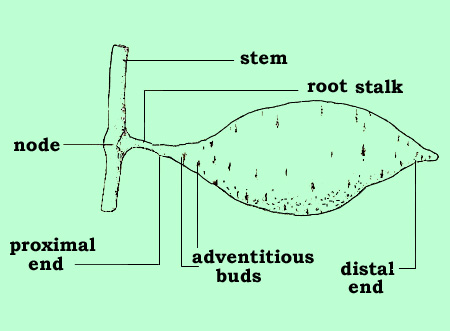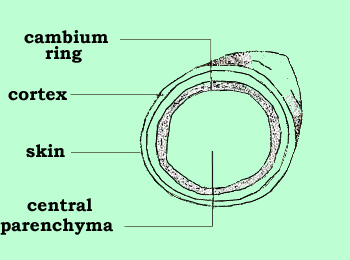|
The storage roots
are the commercial part of the sweetpotato plant, and oftentimes are mistakenly
referred to as "tubers". Most cultivars develop storage roots at
the nodes of the mother stem cuttings that are underground. However, the
very spreading cultivars produce storage roots at some of the nodes that come in
contact with the soil. These are rarely of marketable size and their development
is discouraged by vine lifting.
Parts of storage
roots
The parts of the
storage roots are the proximal end that joins to the stem, through a root
stalk, and where many adventitious buds are found from which the sprouts are
originated; a central part which is more expanded; and the distal end
that is the opposite to the root stalk. The adventitious buds that are located
in the central and distal parts usually sprout later than those located in the
proximal end.
Inside the
storage root
A transverse
section of the storage roots shows the protective periderm or skin, the cortex
or the cortical parenchyma that, depending on the cultivar, varies from very
thin to very thick, the cambium ring where the latex vessels are
found, and the medulla or the central parenchyma. The amount of the
latex formed depends on the maturity of the storage root, the cultivar and the
soil moisture during the growing period. The latex drops are produced when
the storage roots are cut and they darken very quickly due to oxidation.
Source:
Huaman, Z. Systemic botany and morphology of the sweetpotato plant. Technical
Information Bulletin 25. International Potato Centre, Lima, Peru. 22 p. |
Storage
root formation
Storage
root shape

Parts
of the storage root (Z. Huaman).

Inside
the storage root (Z. Huaman). |

